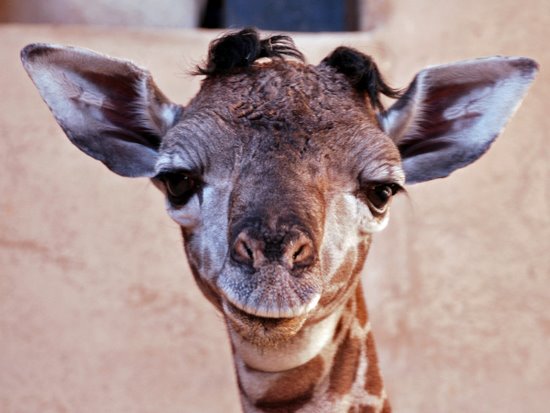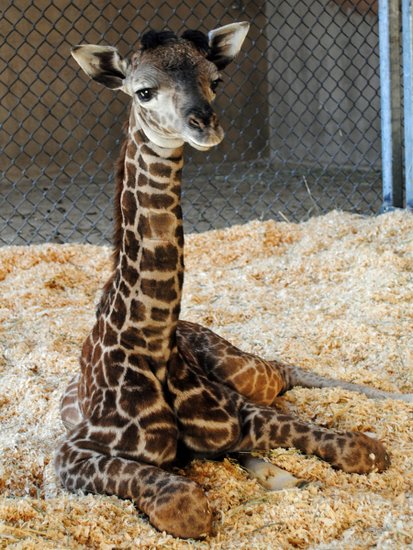S.B. Zoo Giraffe Gives Birth to Surprise Baby
Young, First-Time Mother Refuses to Nurse

When Audrey arrived at the Santa Barbara Zoo in March 2010, zookeepers had no idea she was five months pregnant. In fact, the Masai giraffe’s pregnancy remained hidden over the next 10 months – the species’s gestation period is 14-15 months – until she gave birth to a five-foot nine-inch, 109-pound baby on January 9. Determining a giraffe’s pregnancy, explained zoo officials, is difficult as they don’t have a set breeding season and three-year-old Audrey’s weight gain was attributed to normal growth. And, explained Zoo Director Nancy McToldridge, “It is likely a genetic defense strategy for animal mothers not to look pregnant to keep predators from singling them out.”

The male calf, named Daniel, won’t be available for public viewing for another several weeks while he acclimates to his new surroundings and learns to feed on his own. Zookeepers are watching Daniel closely, as the survival rate of calves in captivity – even under the most ideal conditions – is around 50 percent; in the wild it’s 25 percent. And the fact that Audrey is such a young, first-time mother is making Daniel’s care even more difficult, explained zoo officials.
She reportedly refused to nurse the young calf, causing concern amongst zookeepers. Ingesting its mother’s first milk is extremely important for a baby mammal because the fluid — called colustrum — contains antibodies which provides immunity until the offspring can produce its own antibodies at 6-8 weeks old. However, the zoo lucked out when it tracked down a woman in town who was willing to milk her goat that had just gone into labor. Daniel was fed the goat’s colostrum and will continue to be fed a combination of goat and and cow colustrum from a bottle for 7-8 months.
Daniel’s birth marks a milestone for the Santa Barbara Zoo’s transition from exhibiting Baringo giraffes to Masai giraffes as part of “a regional giraffe management program with other West Coast zoos,” explained zoo spokesperson Julia McHugh. “This allows the zoos to maximize the genetic diversity within the sub-species, while minimizing distances giraffes have to be transported,” she said. Masai giraffes – the largest of the subspecies – can grow up to 17 feet tall and clock in at 2,700 pounds.
In addition to Audrey, the Santa Barbara Zoo has another female Masai giraffe named Betty Lou as well as a remaining Baringo named Sulima. Considered a geriatric giraffe, Sulima is 21 years old and is expected to live out the remainder of her live in Santa Barbara. Masai giraffes, noted McHugh, have “lacy-edged, oak leaf-shaped, irregular spot patters,” while Baringos sport “polygon-like spots.” The arrival of a young male Masai who was expected to join the three females later this year may be delayed because of Daniel’s birth.



